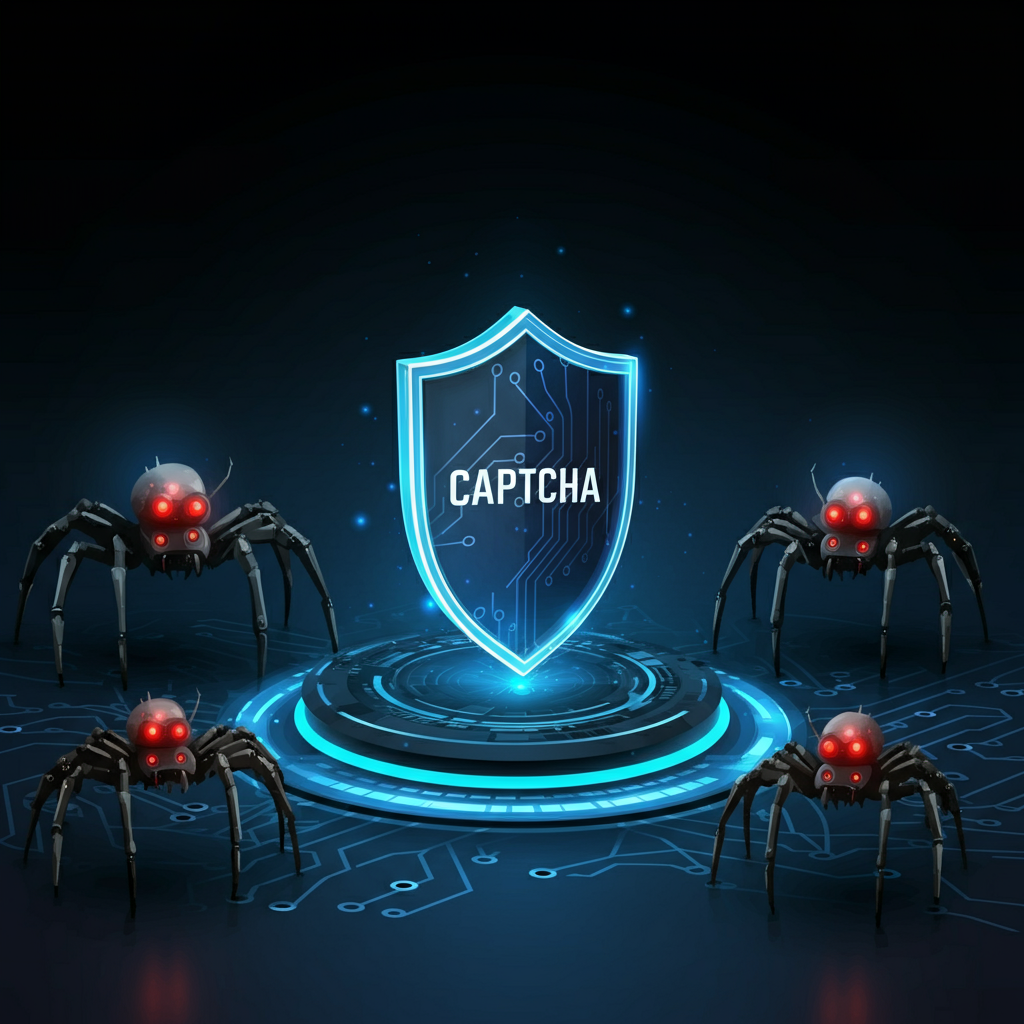At TecAdvocates, we help organizations build secure, scalable digital solutions—and that means using the right tools to safeguard both your business and your users. We know you spend time and resources building a site that represents your brand and serves your customers. That’s why we add multiple layers of security to protect your virtual presence from real threats, like malicious bots, spam, and other automated attacks.
A critical piece of our online armory is a simple yet powerful tool: a CAPTCHA (pronounced “kap-chuh” – go here for the audio).
The rise of online security issues, primarily driven by AI (Artificial Intelligence), has prompted the tried-and-true CAPTCHA to undergo an upgrade. Here’s how we are helping our TecAdvocates websites handle this enhancement, and what you can do about it.
What Exactly is a CAPTCHA?
Like dealing with traffic lights when driving, the CAPTCHA is a part of online life. Everybody has checked a box saying “I’m not a robot” or picked out the pictures with a bus in a fuzzy image grid. While it may be a minor annoyance, this simple security measure plays a crucial role in protecting your website from malicious activity. Today’s CAPTCHA works behind the scenes without bothersome queries, reducing the friction for users to respond to calls to action (CTA).
CAPTCHA stands for Completely Automated Public Turing test to tell Computers and Humans Apart. It’s a mouthful and a forced acronym if there ever was one. Well, the CAN-SPAM Act could be worse – it stands for Controlling the Assault of Non-Solicited Pornography and Marketing Act.
A CAPTCHA is a type of challenge-response test used in computing to determine whether the user is human. The core idea is to present a problem that is easy for humans to solve but difficult for computer programs or bots. Early versions featured distorted text or numbers that humans could read, but optical character recognition (OCR) software struggled to interpret. As bots became more sophisticated, CAPTCHA evolved into more complex tasks, like image recognition or behavioral analysis.
The goal is to filter out automated traffic generated by bots that can wreak havoc on websites by:
- Flooding forms with spam submissions
- Creating fake user accounts
- Attempting brute-force logins
- Scraping valuable data
CAPTCHAs stop most of these bad actors in their tracks, ensuring your site remains functional, secure, and trustworthy.
Why Your Website Needs CAPTCHA?
Leaving your website unprotected against bots is like letting everyone in your club without checking ID or searching bags for weapons and other items that cause trouble. Automated programs can bring chaos and degrade your site’s functionality, security, and reputation. Your CAPTCHA is the ever-vigilant muscled bouncer protecting your online property from unruly guests.
Here are the key reasons why implementing a CAPTCHA is a non-negotiable for modern websites.
Prevent Spam and Fake Registrations
One of the most common uses for bots is to flood websites with spam. This can take many forms:
- Fake Account Creation: If your site allows user registration, bots can create thousands of fake accounts, which can spread spam, manipulate user ratings, or launch other attacks.
- Comment Spam: Bots can overwhelm your blog or forum with irrelevant comments, often containing malicious links, cluttering your site and harming your SEO.
- Contact Form Spam: Your contact forms can be bombarded with fake submissions, filling your inbox with junk and making it difficult to find legitimate customer inquiries.
A CAPTCHA acts as a gatekeeper, ensuring that only humans can submit forms or create accounts.
Protect Against Brute-Force Attacks
A brute-force attack is a trial-and-error method used by bots to guess login credentials. The bot systematically tries millions of username and password combinations until it finds a match. Once it gains access, it can steal sensitive data, deface your website, or use the compromised account for other malicious activities.
Placing a CAPTCHA on your login page significantly slows down these attacks. Since the bot cannot solve the CAPTCHA, it is blocked from attempting multiple password combinations, effectively shutting down the brute-force attempt.
Stop Data Scraping
Data scraping is the automated process of extracting large amounts of data from websites. Competitors or malicious actors might scrape your site to steal product pricing, customer lists, or proprietary content. This not only constitutes a theft of your intellectual property but can also slow down your server and negatively impact the experience for real users. A CAPTCHA can help block the bots responsible for this activity.
SEO Damage
Search Engine Optimization (SEO) plays a critical role in your website’s success. Sites inundated with bots make it difficult for legitimate scans from search providers like Google. It’s like a crowd of non-ticket holders rushing the gates of your event and blocking the way of your paid patrons.
Excessive bot activity can cause Google to flag your site or spammy behavior. And once your site gets branded with the scarlet letter, your traffic will plummet faster than the ratings of a televangelist caught in a sex scandal.
Secure Online Polls and Surveys
If you use online polls to gather customer feedback or make business decisions, you need the results to be accurate. Bots can easily skew the results of a survey by voting hundreds or thousands of times, rendering your data useless. By requiring users to solve a CAPTCHA before voting, you ensure that each submission comes from a real person, preserving the integrity of your poll.
Google reCAPTCHA vs. Cloudflare Turnstile
For years, Google’s reCAPTCHA was the go-to solution for website owners. But a newer, more user-friendly alternative has emerged: Cloudflare’s Turnstile. There are two main reasons the online world is taking a second look at Google reCAPTCHA: privacy and price.
No one was comfortable with Google using its reCAPTCHA to collect data for advertising. However, many considered it a fair price to pay for this free service. But starting in 2026, Google will change the game in a way that dims their CAPTCHA as the default option.
Starting January 1, 2026, Google will move its reCAPTCHA to a pricing model. But this was not the only red flag. Other concerns surfaced over performance and a less protective privacy policy. It crossed the threshold of concern for the online collective consciousness.
Like most online providers, TecAdvocates used Google’s reCAPTCHA. We now recommend Cloudflare Turnstile and will be migrating all our websites to it.
Cloudflare Turnstile is a newer, more innovative CAPTCHA alternative that prioritizes both security, the user experience, and privacy. It is invisible to the user while effectively blocking bots.
Turnstile works by running a series of small, non-intrusive JavaScript challenges in the background that verify the user’s browser environment. These challenges are imperceptible to humans and take only a fraction of a second to run. The vast majority of real users pass without ever seeing a puzzle or even a checkbox. Only the most suspicious traffic requires a challenge.


